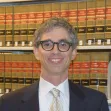Exclusives
BLOG POST
Applying to Graduate School in Planning: Writing a Good Statement of Purpose
<p class="MsoNormal"> Summer is the time to start thinking about graduate school applications typically due in the late fall and early spring. Previous blogs have looked at how to investigate<a href="/node/38163" target="_blank"> if planning is for you</a>, find the <a href="/27243" target="_blank">right</a> program, <a href="/26388" target="_blank">apply</a>, and <a href="/22992" target="_blank">decide</a> which offer to take up. This blog looks in more detail at the statement of purpose or letter of intent, an important part of the application packet. The following tips will help you craft a compelling statement: </p>
FEATURE
Prince Charles vs. the Architects
A dust-up between architects and the Prince of Wales over a speech and a £1b development is bringing the age-old battle between traditional and modern architecture to a head. Managing editor Tim Halbur summarizes the news.
BLOG POST
Sorting Out Sonia Sotomayor
<p> According to the <a href="http://www.washingtonpost.com/wp-dyn/content/article/2009/06/27/AR2009062702476.html?hpid=topnews">Washington Post</a>, 62% of Americans think Sonia Sotomayor should be confirmed for the U.S Supreme Court because she is “about right” ideologically. The question is, how good will she be for municipal attorneys? </p>
BLOG POST
Design our industrial future
I <a href="/node/38510">previously lamented</a> the apparent death of industrial use in our cities by the widespread application of terms like “post-industrial” and “rust-belt.”<span> </span>While semantics is an issue, let’s not forget that design matters and, in terms of industrial use, it hasn’t seemed to matter enough in recent years.<span> </span><span> </span> <p> In times past, industrial use was often a form of pride.<span> </span>Many of the hulking, multi-story industrial buildings in older cities are (still) beautiful additions to our cityscapes.<span> </span>In some cities, those that went vacant have spawned a new form of <a href="http://www.philly.com/philly/hp/news_update/20090301_Eploring_abandoned_industrial_hulks.html?viewAll=y">urban scavenge hunting</a> by those seeking to fuel their appreciation for our industrial past through photography and exploration.<span> </span>Think as well of the <a href="http://vintagraph.com/wpa-posters/health-and-safety-posters/">WPA posters</a>, many of which used stylized industrial themes to promote our “American” identity.<span> </span> </p>
BLOG POST
The Mobile City
<p> <span class="status-body"><span class="entry-content">AZUL: 12PM-3PM@The Brig - Abbot Kinney and Palm in </span></span> </p> <p> <span class="status-body"><span class="entry-content">Venice; 6PM-9PM@La Brea/Pico Billboard Eco Art - 4829 </span></span> </p> <p> <span class="status-body"><span class="entry-content">West Pico just east of La Brea</span></span> </p>
BLOG POST
Raising the Green Bar again: from EcoDensity to "Greenest City"?
<p> <span style="font-size: 10pt; font-family: 'Courier New'">Over various blog posts through the last few years, I've shared some of the key steps and stages leading to the eventual unanimous Council approval of <a href="/node/33517" target="_blank">Vancouver's EcoDensity Initiative</a>. Since then the EcoDensity Charter and new policies have been changing the way we think about density, green building and site design, and our ecological footprint in and outside of city hall. We've also been moving forward on various EcoDensity actions approved in principle by Council back in 2008.
BLOG POST
Planning for "Bozos"
<span style="font-family: 'Times New Roman'">All forms of public decision-making are subject to controversy and competing expectations. Many of these relate to the perceived utility gained -- or disutility incurred -- through public expenditures.
FEATURE
Don't Fear the 'Dozer
Opinions are flying in the debate over whether or not ailing cities like Detroit should bulldoze their empty neighborhoods. John Kromer of the Fels Institute of Government adds a rational note with this op-ed, explaining what The Flint Model for shrinking cities actually entails.
FEATURE
Next Steps for Shrinking Cities: Results of the Planetizen Brainstorm
Bulldoze? Densify? Walk away? There are many ways cities can react to shrinking populations and abandoned neighborhoods. Planetizen readers decide which ways are the best.
BLOG POST
Free Gas To Stimulate Main Street
<p> Everybody knows that most, if not all, of downtown businesses' customers arrive by car. So it's intuitive to try to come up with a way to encourage drivers - who normally wouldn't venture downtown - to hop into their rides and cruise on down to Main Street to shop for wares. If we could do this, just think of all the new business we'd be stimulating! In continuing with this logic, it's also a given that it's impossible for would-be customers to actually get to downtown without the essential <em>attaché</em> to driving, gasoline. So, isn't it therefore intuitive to suggest that if cities were to give away a little bit of gas to each customer – you know, to kind-of thank them for their generosity - then customers would find an overwhelming incentiv
BLOG POST
Urbanism, Suburbs and Families: They Can All Go Together
<p> A few weeks ago, I read an online comment suggesting that unnamed "planners" displayed no interest in suburbia, single-family housing or family life, and instead are only interested in improving downtown neighborhoods for single people. If by "planners" the author of this comment meant new urbanists or critics of the sprawl status quo, this claim is simply incorrect. </p> <p> Over the past month, I have visited half a dozen new urbanist developments in Dallas and Denver (1). All of these developments have a few things in common: all include both retail and residential uses, and all strive for walkability by providing sidewalks and narrow, gridded streets. But the developments differ in two other respects: geography and housing type. </p>
BLOG POST
The Informal Economy: Michael Jackson Edition
I knew it was going to be a madhouse in downtown L.A. for Michael Jacksons memorial service, but I had to go see what it was like for the urban novelty of a huge swath of downtown closed off for thousands of fans and mourners.
FEATURE
Greening America's Roadways
Our nation's roads must be greener, says David Wenzel of HNTB. A green road is one that is designed, built and maintained in a manner that protects and enhances the environment, lessens the impact on its surroundings, and encourages mass transit.
FEATURE
A Walk On The High Line
Managing Editor Tim Halbur reviews The High Line, the much-lauded new linear park in Manhattan.
BLOG POST
London's Big Stadium Gamble
<p> The Olympics can be awesome for cities. Or they can be devastating. Rarely they're both, and most often they are an economic drain caused by over-investment in facilities with limited long-term usability. So when London's plans for a 2012 Summer Olympics stadium that would reduce from 80,000 seats during the games to a more realistically usable 25,000 seats after, Olympics experts, city officials and taxpayers rejoiced. But <a href="http://www.thisislondon.co.uk/standard-olympics/article-23711886-details/Olympic+legacy+chief:+Keep+80,000-seat+stadium+for+World+Cup+bid/article.do" target="_blank" title="Olympic legacy chief: Keep 80,000-seat stadium for World Cup bid - London Evening Standard">recent news</a> has turned that rejoice to disgust.<br />
FEATURE
Brainstorm: Can Cities Shrink Gracefully? Should They? How?
As the recession digs in, cities across the country are left with large swaths of abandoned or vacant places. Can these cities shrink gracefully? Do they even need to? Vote on ideas submitted by the Planetizen community, or suggest your own.
BLOG POST
Part Time Lover - Is The Car Just An Affair?
<p> America's so-called “love affair” with the automobile, although cliché, provides a vivid description of how attached we really are to driving. Public policy, and the historically overwhelming effect of auto industry lobbying, is only partly to blame for the endemic traffic jams and smog of the twentieth century. Bruce Schaller, a transportation consultant hired by New York City advocacy group Transportation Alternatives, <a href="http://www.transalt.org/files/newsroom/reports/schaller_Feb2006.pdf">recently demonstrated</a> that urbanites with multiple transportation options still choose to commute by car for rational reasons of privacy, convenience, and speed. A chart of his, shown below, demonstrates how perplexing this choice is. Overcoming these reasons is a ser
BLOG POST
Finding Planners with Shared Interests: The Post-Graduation Experience
In recent months many planning students have graduated and are moving on to the next phase of life—jobs, internships, fellowships, and such. For many this will involve a move to a new place. Even those staying in the same metropolitan area will seldom make it back to their planning program, and besides their fellow students will have scattered. Graduate school provides a peer group of those with similar interests and training. How do recent graduates create such a network when they are no longer in residence at a university?
BLOG POST
Making the Car Free Choice
<p> The U.S. Census Bureau estimates that in 2007, over 9.8 million American households had no auto available at home. Although those car free households make up only 8.7% of the U.S., the split by housing ownership is striking: only 3.3% of owner occupied homes do without at least one vehicle, where fully 19.9% of renters have no cars parked in the proverbial driveway. </p> <p> For some, not owning a vehicle is not a matter of choice -- just the reality of limited resources. For others, it's a matter of preference, and many residents of cities with fairly good public transportation choosing to go without cars. Although car ownership is a useful indicator of neighborhoods that provide good options for public transit, the reality is the most important variable isn't whether you own one, but how much you <em>drive</em>. </p> <p> That's the idea behind the annual Car-Free Challenge sponsored by the San Francisco Bay Area nonprofit <a href="http://www.transformca.org/">TransForm</a> (formerly TALC - Transportation and Land Use Coalition). The Challenge's over 160 participants pledged to drive less than 125 miles in June, much less than the Bay Area average of 540, or the U.S. average of over 1,000. Many participants contributed blog posts about their experiences on the <a href="http://www.transformca.org/car-free/challenge-posts">Challenge website</a>. More than just a group of footloose young professionals living in The Mission, challenge participants were remarkably diverse group living mostly in the Bay Area but also Sacramento, Los Angeles, and cities outside of California. </p>
Pagination
EMC Planning Group, Inc.
Planetizen
Planetizen
Mpact (formerly Rail~Volution)
Great Falls Development Authority, Inc.
HUDs Office of Policy Development and Research
NYU Wagner Graduate School of Public Service
Urban Design for Planners 1: Software Tools
This six-course series explores essential urban design concepts using open source software and equips planners with the tools they need to participate fully in the urban design process.
Planning for Universal Design
Learn the tools for implementing Universal Design in planning regulations.


































